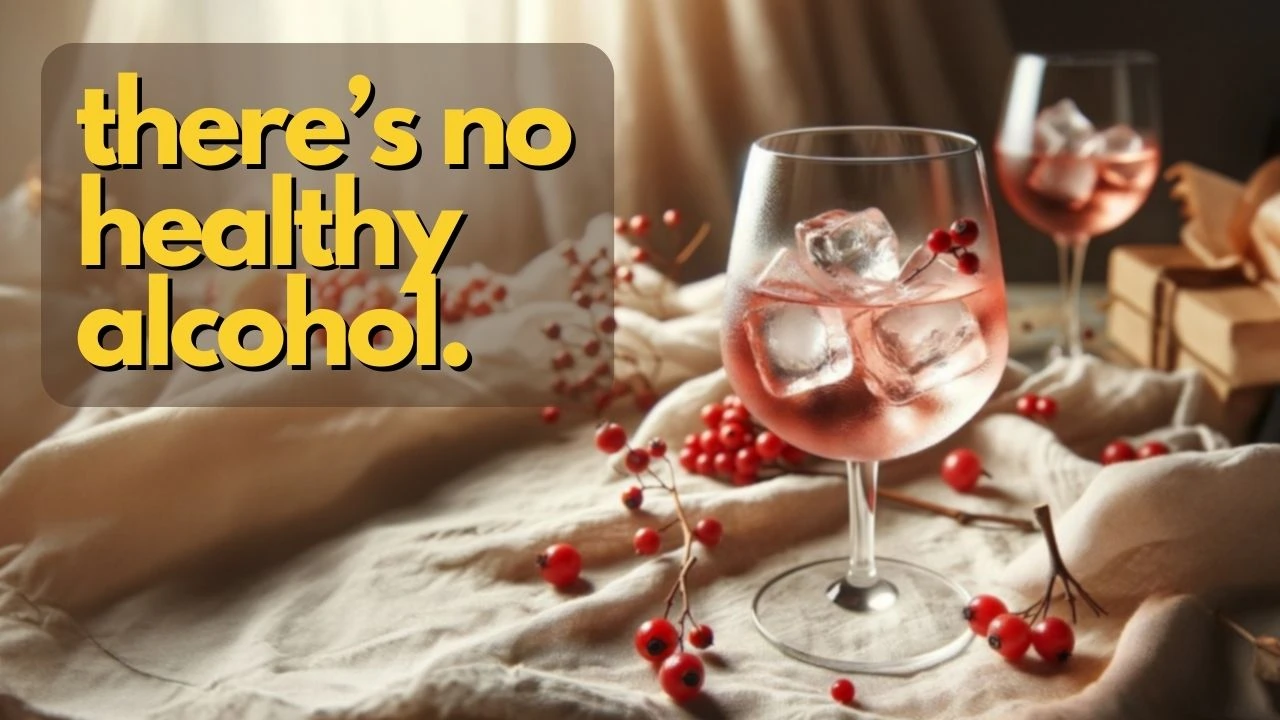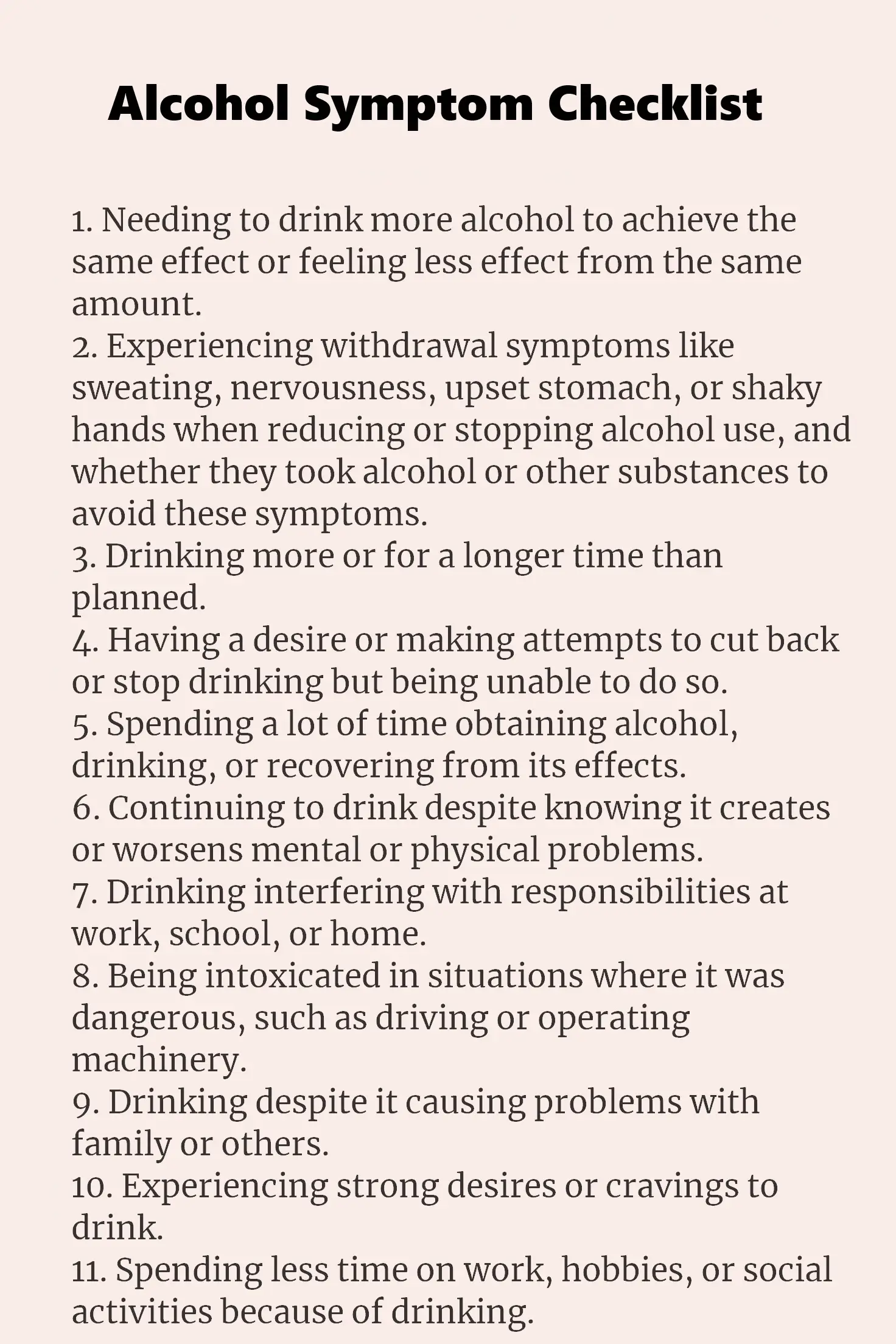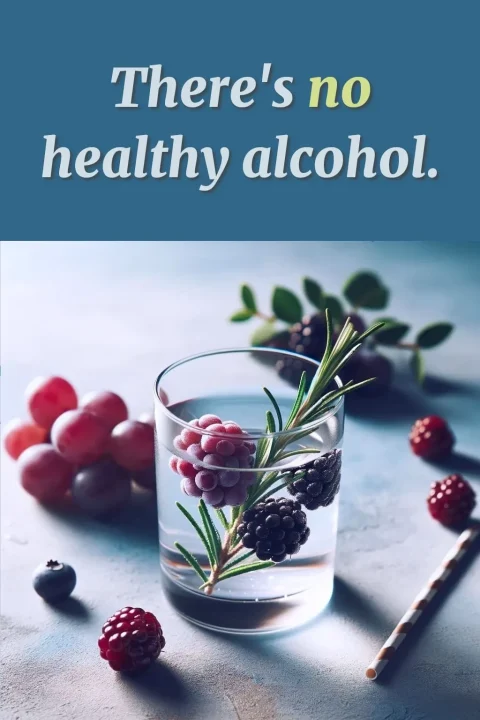Today's Thursday • 7 mins read
— Researched and written by Dr. Sandip Roy.
We often hear about the benefits of moderate alcohol consumption, especially when it comes to drinks like red wine.
The idea comes from old research, from the 1970s and 1980s, which suggested moderate alcohol consumption cuts cholesterol build-up in the heart’s arteries.
Then doctors started recommending 1–2 drinks per day as a heart-healthy lifestyle. This became popular advice in the late 20th century. However, recent research has debunked these claims.
Want to know the alcohol myths and facts in one short sentence? It’s this:
Healthy alcohol does not exist.

The Illusion of Healthy Drinking
How much alcohol is safe to drink daily?
Zero. The current reality is that there’s no such thing as healthy alcohol.
Whatever positive qualities alcoholic drinks may possess, even if we were to believe those decades-old flawed studies, the health risk of the ethanol content essentially negates them.
The health risks of alcohol outweigh its purported benefits.
A 2022 major study by Harvard Medical School, which studied 371 463 individuals, found that alcohol consumption, at any level, escalates the risk of cardiovascular diseases.
The original study specifically found that for every increase in alcohol intake by one standard deviation, the risk of high blood pressure went up by 1.3 times, and the risk of coronary artery disease increased by 1.4 times.
So, 1 extra drink = 1.3 to 1.4 times increased risk of high blood pressure and heart disease.
Debunking The “Moderation”
Moderation is a myth when it comes to alcohol.
If you think that drinking moderately, drinking just on weekends, or having that occasional social drink, is a safe practice, then you have a rude shock waiting.
This 2020 research concludes,
“Our findings do not support the notion that alcohol from any drink type is beneficial to health. Consuming low levels of beer/cider and spirits already associated with an increased risk for all health outcomes, while wine showed opposite protective relationships only with ischemic heart disease.”
For those interested in stats in the study that looked at almost 450,000 participants over 7 years:
- Drinking beer/cider and spirits is linked with a higher chance of dying. Specifically, the risk of death increases by 56% for beer/cider drinkers and 47% for spirit drinkers.
- These drinks also raise the risk of cardiovascular diseases by 25%, blocked arteries (ischemic heart disease) by 12% to 17%, strokes by 63% to 59%, and cancer by 14%.
So, the verdict is out: Don’t drink, even in moderation.
Alcohol Shrinks Your Brain
Alcohol shrinks your gray matter.
This study shows that drinking alcohol is linked to a decrease in the volume of the brain’s gray matter, meaning the more alcohol someone consumes, the smaller the volume becomes.
Read that again — the more you drink, the smaller it becomes.
This effect of alcohol on the brain is stronger than that of any other lifestyle choice studied.
Worse news: The study also found that alcohol negatively affects the brain’s white matter and how different parts of the brain connect and communicate.
Two more crucial findings:
- People with higher blood pressure and body mass index (BMI) face a greater risk of alcohol-related damage.
- Binge-drinking, or drinking a lot of alcohol in a short period, has additional harmful effects on the brain beyond just the amount of alcohol consumed.
If you abstain Monday through Thursday and have two or three drinks a night on the weekend, those weekend drinks count as excessive consumption. It’s both the cumulative drinks over time and the amount of alcohol in your system on any one occasion that can cause damage.
• So, is casual drinking bad for you? Yes.
• How much alcohol is safe? None.
Recently, Canada’s New Guidelines for Alcohol Say ‘No Amount’ Is Healthy.’
Dr. Tim Naimi, director of the University of Victoria’s Canadian Institute for Substance Use Research, says,
“Alcohol is harmful to the health starting at very low levels.”
That old advice (“one drink per day for women and two drinks for men”) is wrong. Forget it.
Alcohol Breaks Your DNA
Researchers think that the main way alcohol causes health problems is by damaging DNA.
Alcohol metabolizes it into acetaldehyde in the body, which “damages your DNA and prevents your body from repairing the damage,” says Dr. Marissa Esser, who leads the alcohol program at the Centers for Disease Control and Prevention.
Esser explains, “Once your DNA is damaged, then a cell can grow out of control and create a cancer tumor.”
Worse news: Two genetic variants, both more common in people of Asian descent, affect how alcohol and acetaldehyde are metabolized.
- One gene variant causes alcohol to break down into acetaldehyde faster, flooding the body with the toxin.
- The other variant slows down acetaldehyde metabolism, meaning it hangs around in the body longer, prolonging the damage.
Alcohol Can Cause Cancers
Like smoking, alcohol is a potent carcinogen.
Professor Jennie Connor from Otago University in New Zealand says that there is enough evidence to conclusively say that drinking alcohol directly causes cancer at seven specific sites in the body:
- oral cavity
- pharynx/larynx
- esophagus
- colon
- rectum
- breast
- liver
There is also growing evidence suggesting alcohol likely causes skin, prostate, and pancreatic cancer.
Research also indicates a dose-response relationship. This means the more alcohol one drinks, the higher the risk of getting these cancers.
Of course, the highest risks of cancer are linked with heavy drinking, but even low to moderate drinkers face a considerable risk. And the risk of cancer compounds for those who both smoke and drink.
Annually, alcohol is attributed to over 75,000 cancer cases and nearly 19,000 cancer deaths, according to research by the American Cancer Society.
This study found that cancer deaths made up 30% of all alcohol-attributable deaths in New Zealanders aged 15–79 years, more than all other chronic diseases combined.
The study also found that breast cancer comprised 61% of alcohol-attributable cancer deaths in women, and more than one-third of breast cancer deaths were attributable to average consumption of <2 standard drinks per day.
Dr. Farhad Islami, a senior scientific director at the American Cancer Society, says:
“Even 1–2 drinks per day may be associated with a small risk of cancer compared to non-drinkers.”
Alcohol Symptoms Checklist
During my internship in general medicine, a professor gave us two pieces of advice that I practice to this day:
- Listen to the patient, whatever your branch of practice.
- Ask if they smoke or drink, whatever your branch of practice.
Doctors in healthcare settings often underdiagnose Alcohol Use Disorder (AUD).
For patients who report high-risk drinking, an annual behavioral health screen can include the Alcohol Symptoms Checklist.

Final Words
The compelling body of evidence seems to suggest that there is no “safe” amount of alcohol to take. The risks far outweigh its meager benefits.
Abstaining from alcohol is the way to go forward. And the good news is that this present generation (Gen Z) doesn’t like alcohol as much as earlier generations.
So, let me repeat my question: How much alcohol is healthy?
No amount. There is no safe level of drinking.
Share what the latest research says — the health and death risks of even an occasional drink are too high to ignore.
√ Also Read: These Foods Can Keep You & Your Brain Happy!
√ Please spread the word if you found this helpful.
• Our Story!
» You deserve happiness! Choosing therapy could be your best decision.
...
• Disclosure: Buying via our links earns us a small commission.

